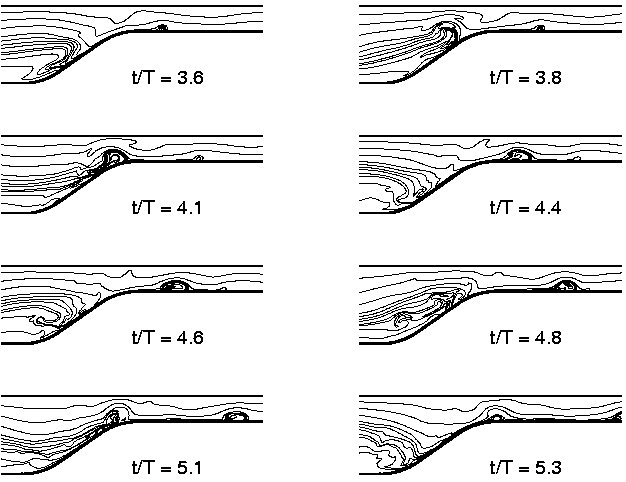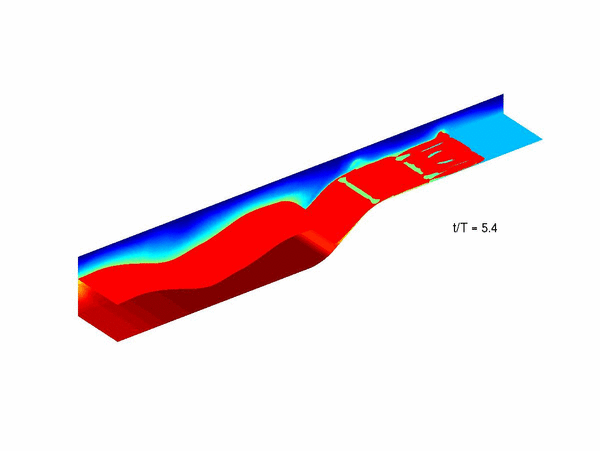Ph.D. Research dissertation: Energetics and Dynamics of Internal Waves on Slopes Using Numerical Simulations (2003 - 2006)
Advisor - Professor Oliver Fringer
In this research, we present results from high-resolution 2D and 3D numerical simulations of the interaction of a first-mode internalwave field with an idealized shelf break. Our emphasis is to obtain an understanding of the partitioning of the internal wave energy over the course of the interaction process and gain insight into the dynamics of the onshore propagating internal boluses that form as a result of the interaction
Numerical Method and Setup
The Navier-Stokes equations with the Boussinesq approximation and with constant kinematic viscosity are are computed with the LES code developed by Fringer(2003) which follows the method of Zang, Street & Koseff (1994) to solve the Navier-Stokes and scalar transport equations, using a finite volume formulation on a generalized curvilinear coordinate nonstaggered grid with a rigid lid. Schematic of the computational setup that formsthe domain for the present simulations is shown in Figure 1.

Figure 1(a): Schematic of the computational setup that forms the domain for the simulations.

Figure 1(b): computational mesh for the domain shown in Figure 1(a).
Results
Figure 2 depicts the density contours (isopycnals) for the critical case (g/s = 1) obtained by imposing a first-mode internal wave field at the left boundary of the domain shown in Figure 1.

Figure 2: Density contours of an internal wave interacting with a critical slope for the domain shown in Figure 1(a)(movie 1 movie 2) movie 3). Figure 3 shows the interaction of incoming mode-one internal wave with a critical slope.

Figure 3: Numerical computation of a breaking internal wave on a critical slope
(movie 1, movie 2 ).
Please visit the Movies link to see some cool animations of internal waves breaking on a slope in a continuously stratified fluid. For more really cool 3D Navier-Stokes Movies, please visit my advisor's movie page
